WNP Home | Accommodation | Attractions | Fauna | Flora | Images | Tours ◦
The Desert Tree Frog (Litoria rubella) varies in colour from grey, red-brown to fawn, often with dark flecks on its back. A dark band runs along the side of the head and body.
The colouration of these frogs often blends so well with its background, that you can often walk straight pass them, without noticing.
The following photos were taken at Kings Canyon (Watarrka National Park), whilst on the ‘Rim Walk’, during a period of rainfall. The frog blended pretty well with the background rocks and if the frog had not moved, we could have stepped on it.

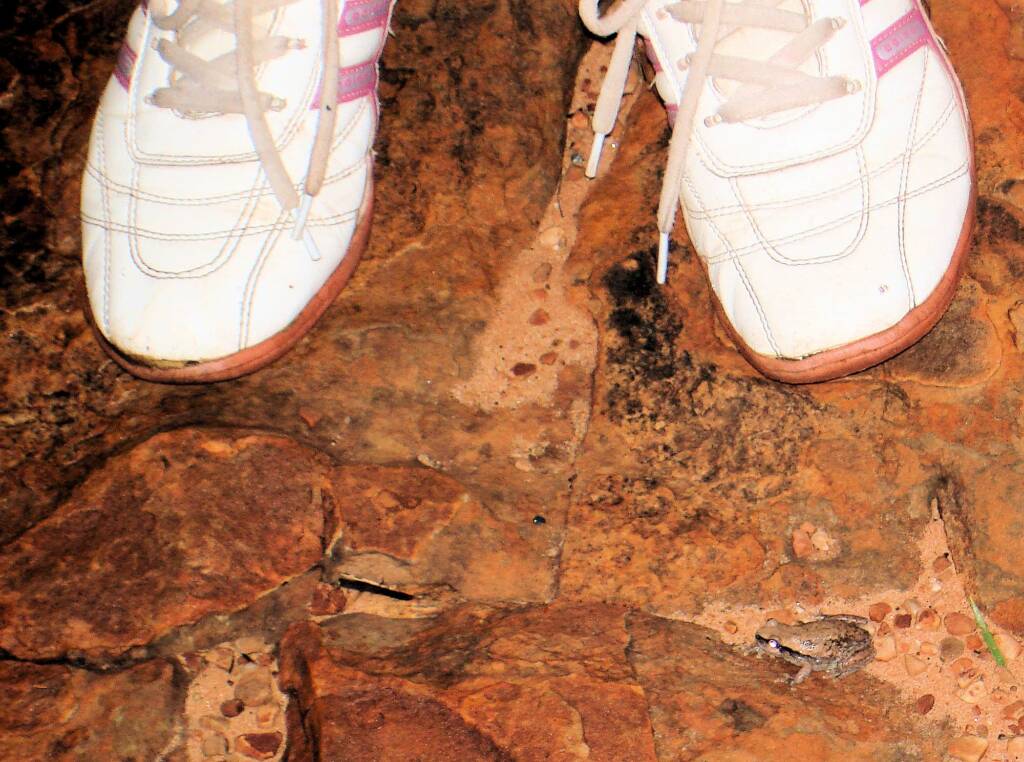
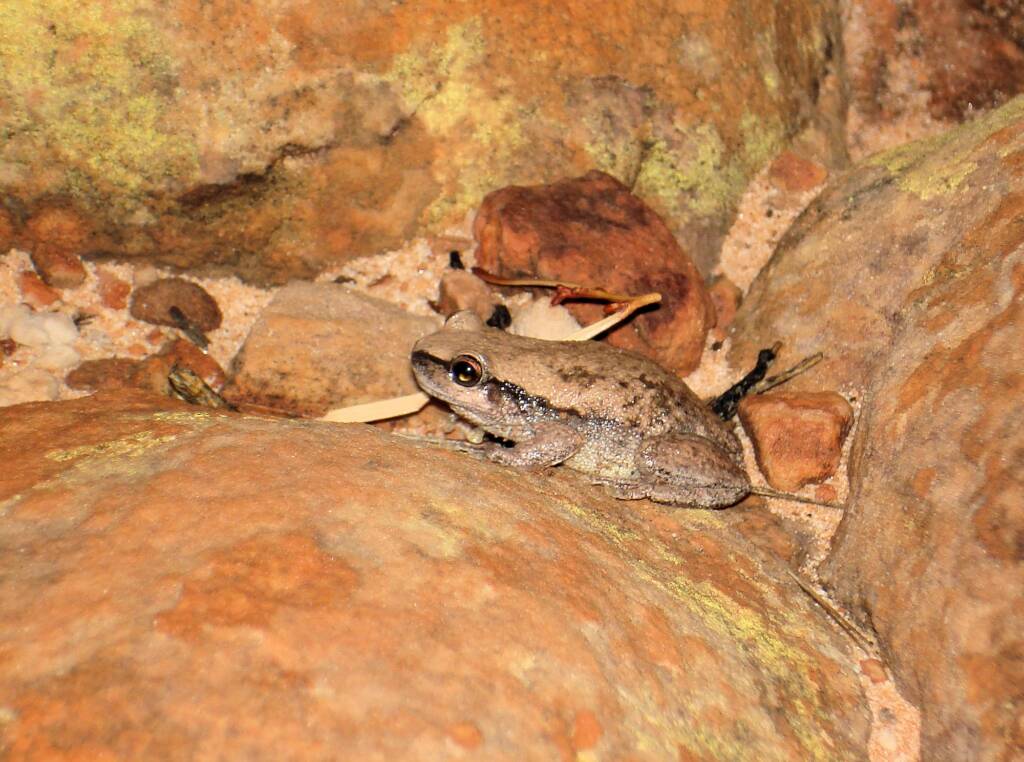
This species of frog are found in a wide range of habitats across the top half of Australia, from the coast, through tropical and to the arid central regions. The frog is usually found sheltered under stones and bark, around creeks, waterholes and even on trees. They can also be found in sheds and other buildings, especially in moist areas, such as dripping pipe, swimming pools, and outdoor toilet areas.
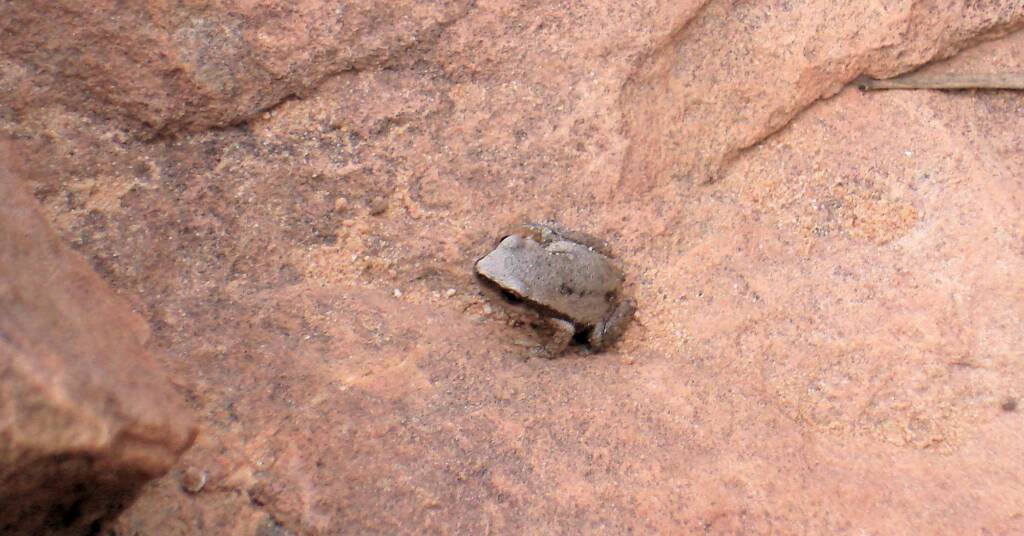
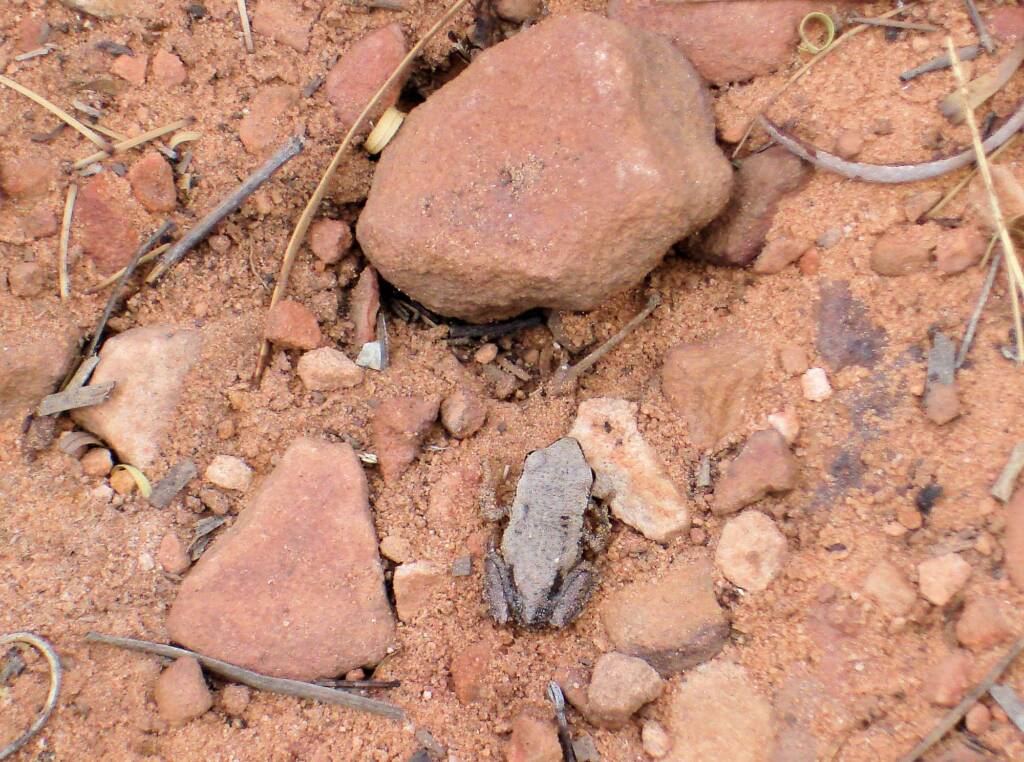
After the recent rains and favourable weather conditions, there was plenty of evidence of frog activity. These photos were taken at Kings Canyon (Watarrka National Park), whilst on the ‘Rim Walk’, descending into the ‘Garden of Eden’. There were frogs everywhere. We spotted at least 20 frogs.
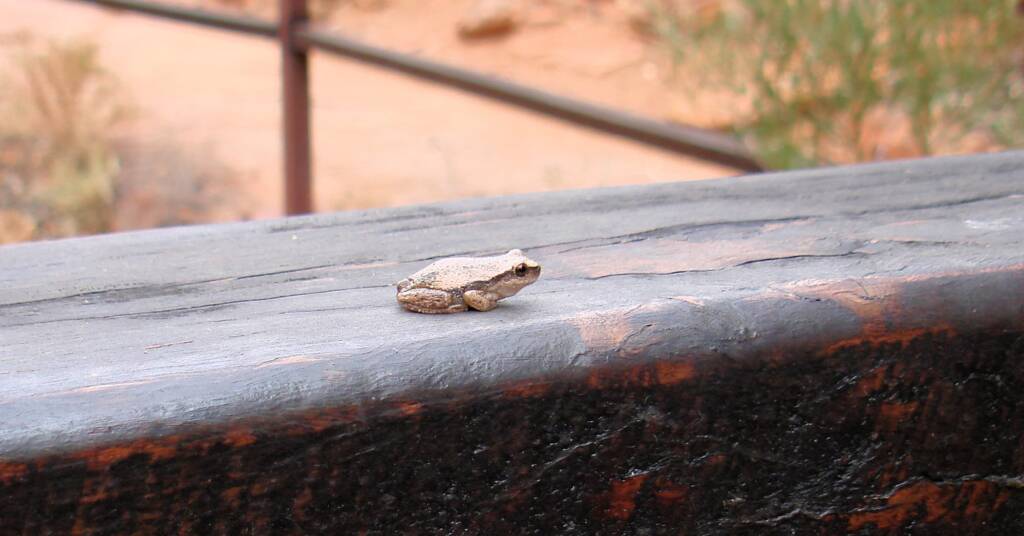
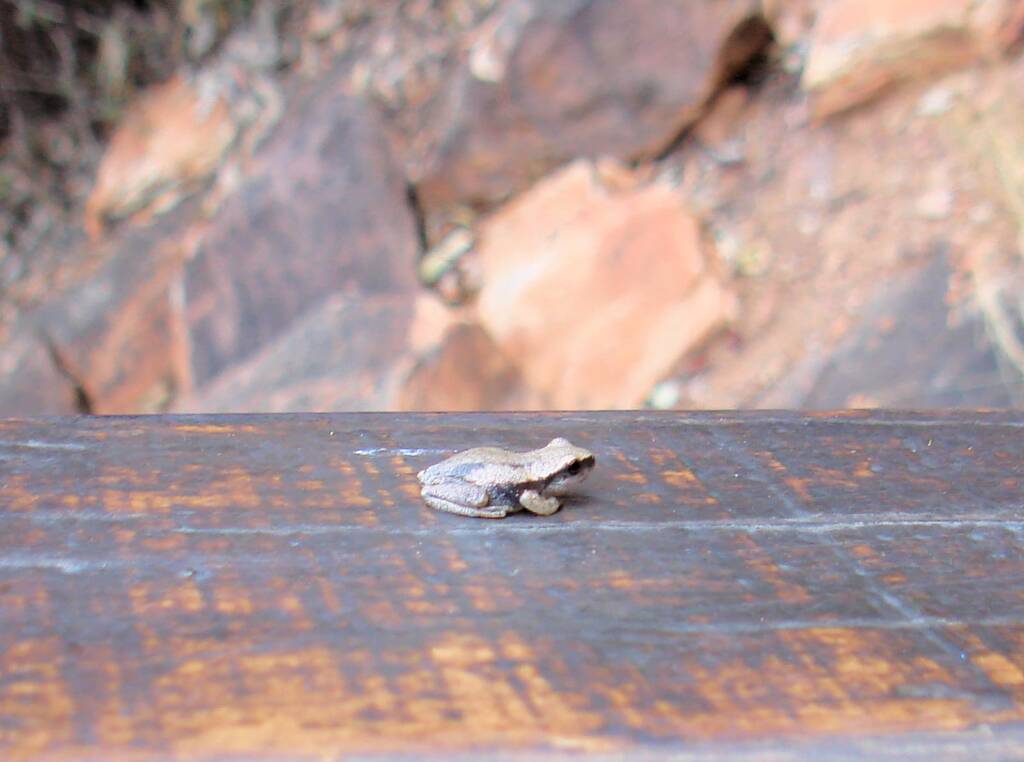
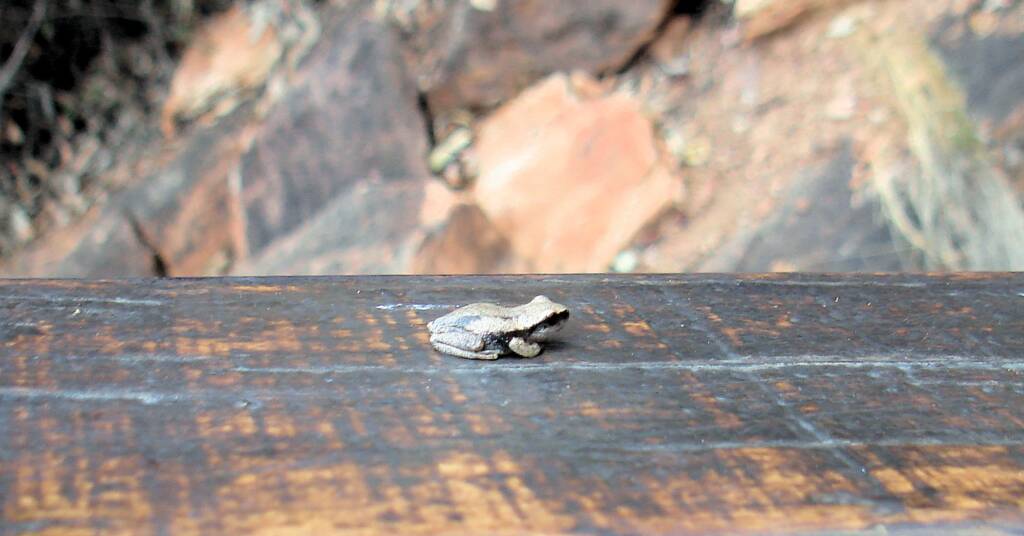
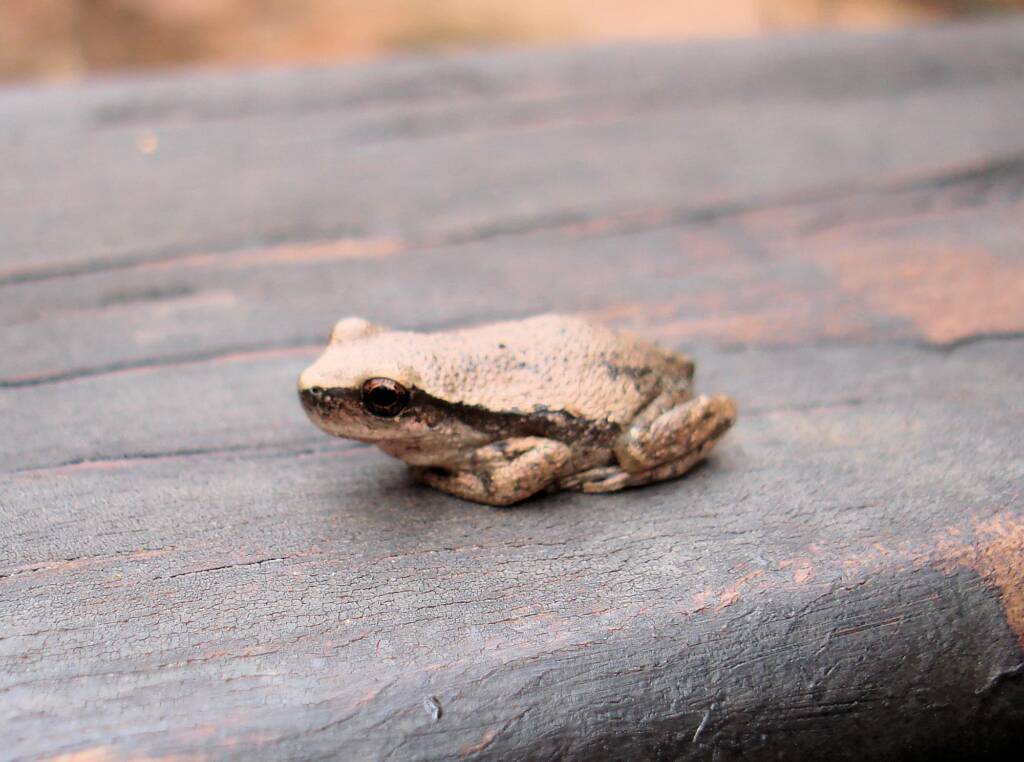

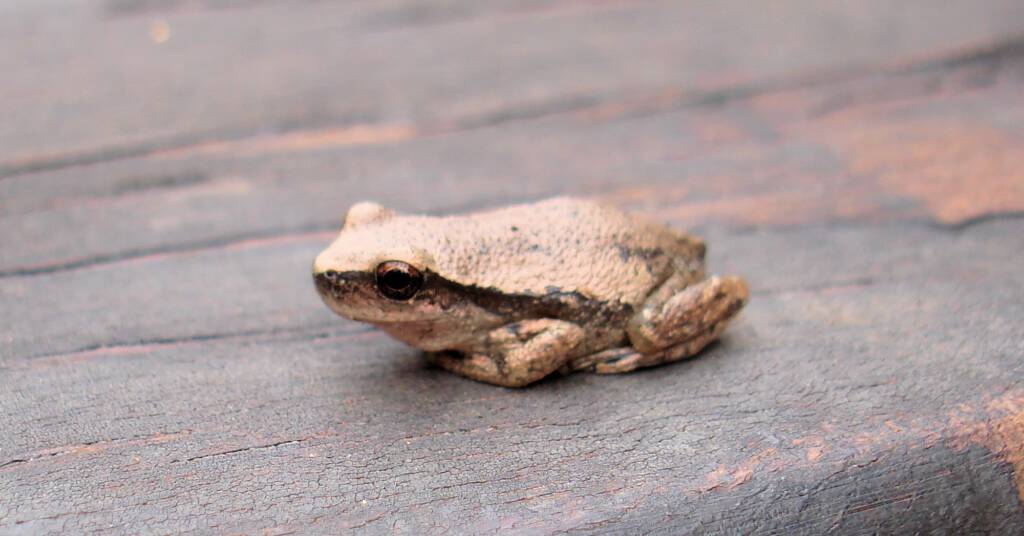
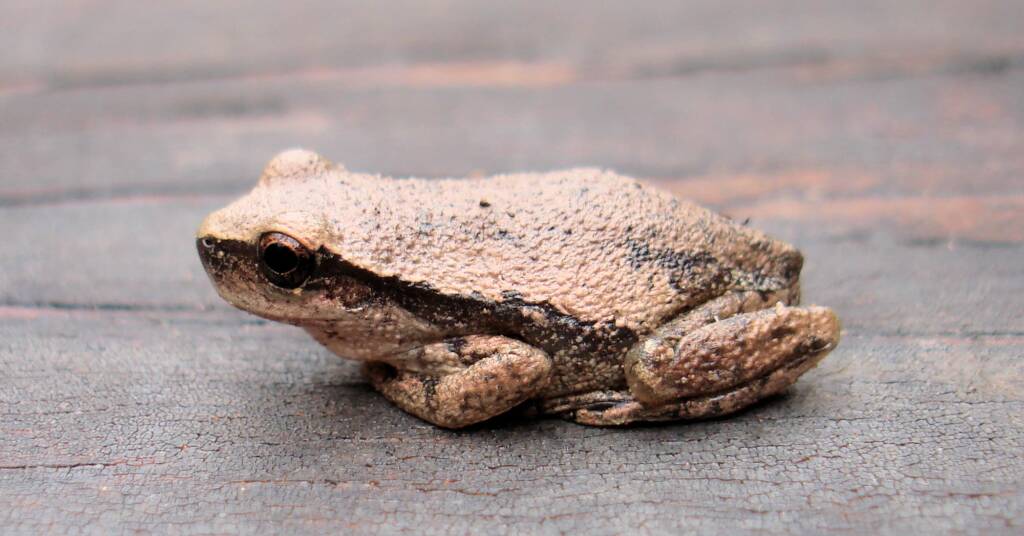
Images © CK Leel
See our Fauna Index for more information and images on the Desert Tree Frog.
- Scientific classification
- Kingdom: Animalia
- Phylum: Chordata
- Class: Amphibia
- Order: Anura
- Family: Pelodryadidae
- Genus: Litoria
- Species: L. rubella
- Binomial name: Litoria rubella
